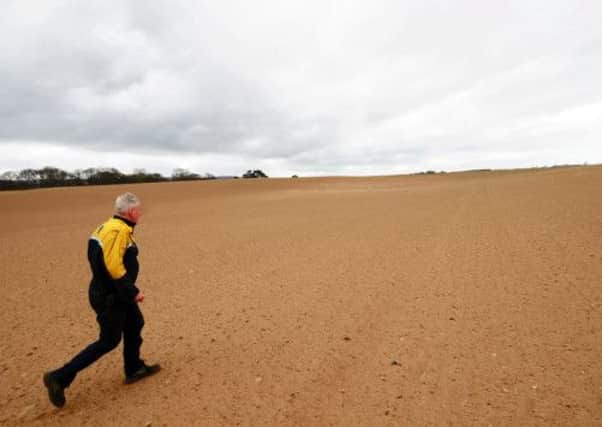Sandstorms turns Moray fields into sand dunes


In a repeat of last week’s mayhem, strong winds were again blowing sand off fields as the spell of dry weather continues.
In some areas sand which had been cleared from roads by snowplough and excavator following last week’s gale force winds was drifting back across the carriageway.
Advertisement
Hide AdAdvertisement
Hide AdAlthough blown sand is an almost annual occurrence because of the nature of the soil in lowland Moray, the recent sandstorms have been the worst that many people can remember.
The strong winds have coincided with farmers cultivating their fields and the threat of blown sand will continue while the weather is dry and until recently sown crops take root.
Murray White, the National Farmers’ Union branch secretary for Inverness, Nairn and Moray, reckoned that as much as 50% of crop yields may have been lost.
He said: “Obviously it’s going to take some farmers several days to clear the sand away.
“But the real costs would be related more to the question of crop yields. We might have lost 10% of the harvest, and then again we might have lost 50%. It’s too early to say at the moment.
“The situation will only become apparent over the coming weeks when crops either grow or don’t.”
Last week a number of roads were blocked by sand drifts as much as 4ft high while others were only barely passable.
Snowploughs
Moray Council mobilised snowploughs and other equipment to clear the roads but today’s winds were threatening to undo much of the work by blowing sand back across roadways.
Advertisement
Hide AdAdvertisement
Hide AdA council spokesman said clearing roads of blown sand was a major undertaking and could take weeks or even months.
He said: “Keeping roads open is an obvious priority and for the most we succeeded in doing that following last week’s winds.
“To achieve that the sand was either ploughed to the sides of the roads and onto verges or, where it was very deep, dug out by excavator.
“However, the return of the strong winds means that in some places it is being blown back onto the roadway and in some cases it is filling back in as soon as it is cleared.”
He said that depositing the sand on adjoining fields was generally not a realistic option because it could contaminate recently sown crops or impede their growth.
Depending on where the sand is deposited, which way the wind chooses to blow and how quickly vegetation stabilises the situation, there will be a continuing risk of sandstorms.
Removing the huge volumes of sand and disposing of it elsewhere was also not a realistic option because of the large costs involved.
The spokesman added: “There is already be a sizeable cost implication for the council in terms of mobilising resources over the past few days to deal with the blown sand, although we are fortunate that some farmers have put in their own resources to help with the clear-up.
Advertisement
Hide AdAdvertisement
Hide Ad“It is also a major operational distraction for our roads section who, having finally got winter out of the way, have been preparing for scheduled seasonal work such as resurfacing and surface dressing which are important to maintaining the condition of our roads network.”
Speaking from his farm at Wester Coltfield in Forres, Moray, barley farmer Cameron MacIver said the sandstorms were set to cost farmers tens of thousands of pounds.
He said: “The problem is that the sand has blown in and stripped the soil off the top of the seeds. So it’s exposed some and in other cases it’s buried them.
“So the ones that are buried are so deep that they won’t grow and the ones that are exposed are just getting battered by sand and being worn down like how sandpaper wears things down.
“I’m scared that the seed won’t be able to recover and they will be killed. I don’t think I’ve seen it as bad as this before. The last bad case was when I was very young in the mid 70s and the mess it left was just
incredible.
“The effect has been felt far and wide again now. I’m hearing stories from all over the place that people are having exactly the same problems from Nairn to Buckie.
“I couldn’t put an exact figure on it, but if you counted all the costs for the farmers in the area the total would probably be over £50,000.”